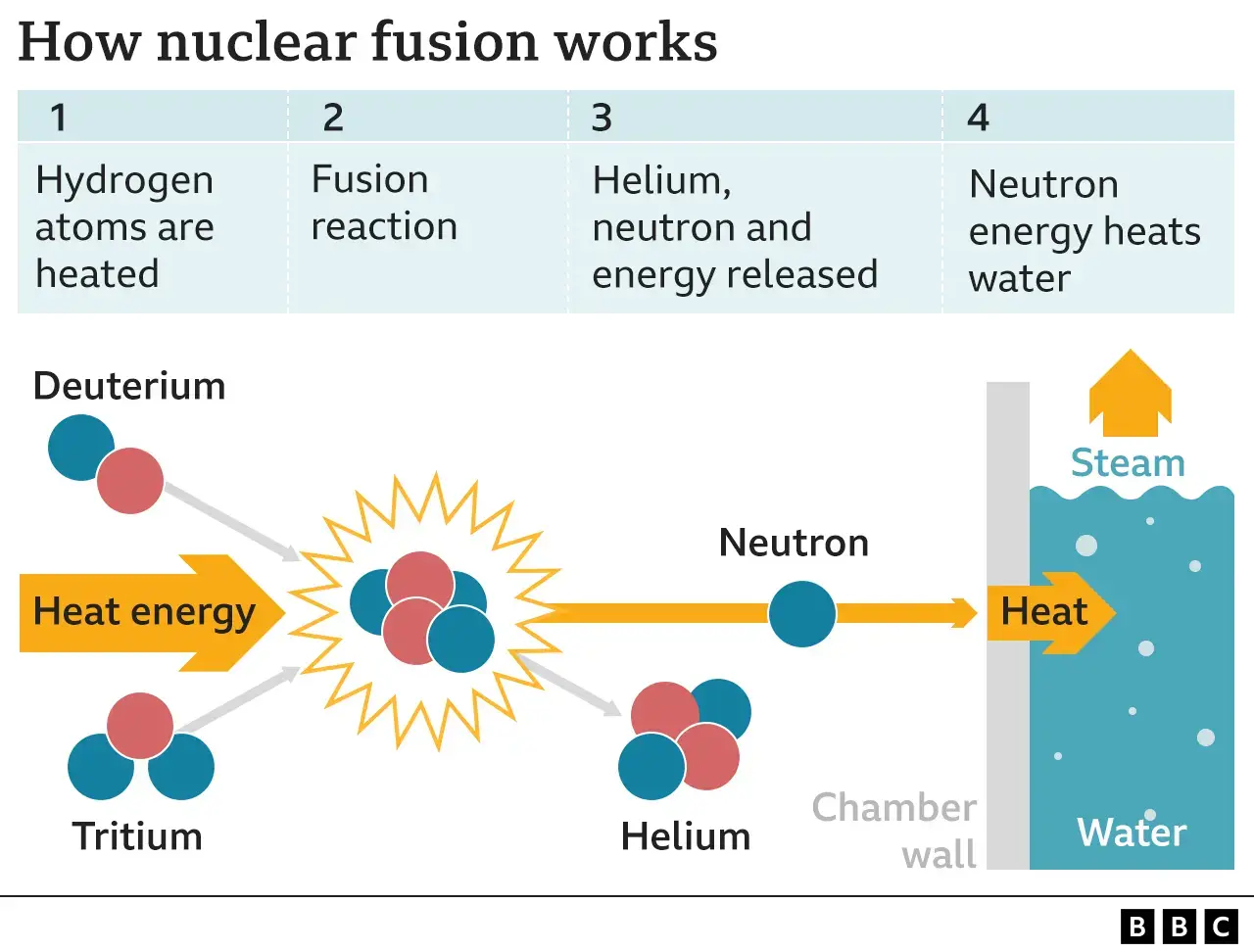Fusion Energy: Unleashing the Future of Limitless Power
- Update Time : Friday, October 25, 2024

Fusion energy is the process of generating power by fusing atomic nuclei together. It mimics the reactions powering the sun and stars.
Imagine a world powered by the same energy that lights up the cosmos. Fusion energy holds the promise of a nearly limitless, clean power source, free from the carbon emissions plaguing our planet. It taps into the power that fuels the sun, potentially offering an answer to the global energy crisis.
For decades, scientists have been striving to harness this form of energy, which could revolutionize how we generate electricity. With recent technological advancements, we’re closer than ever to bringing the power of the stars down to Earth, making it a hot topic for researchers and investors alike who are eager to unlock a sustainable energy future.
The Quest For Fusion Energy
The quest for fusion energy mirrors the energy production of the sun. Scientists worldwide are working hard to replicate this process on Earth. Fusion research has a rich history, stretching back decades. Breakthroughs in technology and understanding have marked this journey. The ultimate goal is to create a clean, inexhaustible energy source. This could transform how we power our world. The journey is challenging, with intense scientific hurdles to overcome. Success in fusion research could mean a future with abundant energy. This energy would be safe and environmentally friendly. The stakes are high, and the potential benefits for humanity are enormous.
Fundamentals Of Fusion
The core difference between fusion and fission lies in their processes. Fusion combines lightweight atoms, such as hydrogen, to form heavier atoms. Fission splits heavy atoms like uranium, releasing energy.
Energy from fusion is the power that fuels stars, including our sun. It offers a potentially limitless, clean energy source. On Earth, achieving fusion requires immense pressure and temperatures over 100 million degrees Celsius.
| Fusion | Fission |
|---|---|
| Merges small atoms | Splits large atoms |
| Produces minimal waste | Generates radioactive waste |
| Requires high temperature | Occurs at lower temperature |
| Not yet viable for power | Currently used in power plants |
Current Fusion Technologies
Tokamaks are a key player in fusion energy research. Their unique doughnut shape helps to contain hot plasma. This is crucial for achieving fusion reactions. Scientists have been working on Tokamaks for decades. They aim to make fusion a reliable energy source.
Laser-Driven Inertial Confinement is another exciting approach. Here, powerful lasers target a small fuel pellet. The goal is to compress it and heat it up quickly. This can trigger a fusion reaction. This method is known for its precision and control.
Both technologies are pushing the boundaries of what’s possible in fusion energy. They offer hope for a clean, limitless energy future.

Credit: www.newscientist.com
Breakthroughs And Milestones
Fusion energy research has seen exciting progress recently. Teams around the world work hard. They aim to make fusion a real power source.
One key experiment used powerful magnets. These magnets help control hot plasma. Plasma is where fusion happens. This method showed promise for stable fusion reactions.
Another breakthrough involved laser technology. Scientists used lasers to heat and compress fuel. This approach reached new efficiency levels. It’s a big step forward.
Fusion could one day give us clean, almost endless energy. These experiments are important steps. They help us understand and control fusion better. Everyone hopes for a future with safe and clean energy.
Challenges In Achieving Sustainable Fusion
Achieving sustainable fusion energy presents significant challenges. Two critical issues are confinement and stability. Fusion reactions require immensely high temperatures. Containing such hot plasma demands advanced materials. Yet, these materials must withstand extreme conditions. They should resist intense heat and radiation without degrading.
Current technologies struggle to meet these requirements. Scientists are exploring various confinement methods. Magnetic confinement uses powerful magnets. Inertial confinement compresses fuel pellets with lasers. Both techniques aim to stabilize the plasma. But, stability remains elusive. Uncontrolled plasma can lead to energy loss, disrupting fusion reactions.
The path to fusion energy is also paved with technological hurdles. Every component in a fusion reactor must perform reliably. From superconducting magnets to heat-resistant walls, the technology must advance. This ensures the fusion process is continuous and safe. Innovation and research are key to overcoming these barriers.
Economic Implications
The development of fusion power plants requires significant capital. High costs are due to advanced technology and materials needed. Funding is a mix of public and private investments. Governments often back initial research, with private entities contributing later. This collaboration aims to make fusion energy a reality.
| Funding Source | Role |
|---|---|
| Government | Supports early-stage research |
| Private Investors | Help scale technologies |
| International Partnerships | Share costs and expertise |
Successful plants could lead to affordable and clean energy. Yet, the initial investment is a hurdle. Long-term returns could offset high upfront costs. This makes fusion projects attractive to investors seeking sustainable impact.
Environmental Impact
Fusion energy is a clean power source with a minimal carbon footprint. Unlike fossil fuels, it doesn’t release harmful greenhouse gases. This makes fusion a key player in combating climate change.
Using water and other abundant materials, fusion reactors could produce energy without the carbon emissions. This process mimics the sun, generating power through the fusion of atoms at high temperatures. It’s a significant step towards a sustainable energy future.

Credit: www.scientificamerican.com
The Road Ahead
International collaborations play a key role in fusion energy development. These partnerships bring together experts from around the world. They share knowledge and resources. This teamwork makes fusion research progress faster. One major project is the ITER in France. Countries like the USA, China, and Russia work together on it. They aim to show fusion can power our world.
Many believe fusion energy will change our future. It could make electricity clean and almost endless. Scientists are working hard to solve fusion’s challenges. They predict the first fusion power plants might start in a few decades. This energy could power homes, cars, and factories without harming our planet. So, the work done today is very important for a brighter, cleaner future.

Credit: www.wtsenergy.com
Frequently Asked Questions
What Is Fusion Energy?
Fusion energy is the power generated by nuclear fusion reactions. In these processes, two light atomic nuclei combine to form a heavier nucleus, releasing energy. It’s the same type of reaction that powers the sun and stars.
How Does Fusion Power Work?
Fusion power works by heating plasma to extreme temperatures so that nuclei can overcome their repulsive forces and fuse together, releasing a vast amount of energy. This energy can potentially be harnessed to generate electricity.
Is Fusion Energy Sustainable?
Yes, fusion energy is considered sustainable. It uses abundant fuels like deuterium and tritium, produces no greenhouse gas emissions, and generates minimal radioactive waste compared to fission-based nuclear power.
Can Fusion Energy Replace Fossil Fuels?
Fusion energy has the potential to replace fossil fuels. It offers a large-scale, carbon-neutral energy source. However, practical and commercial fusion power is still under development and not yet available.
Conclusion
This blog has illuminated the potential and challenges of this game-changing technology. As research advances, the dream of clean, abundant power inches closer to reality. Stay tuned; the fusion revolution is just beginning.


















Leave a Reply